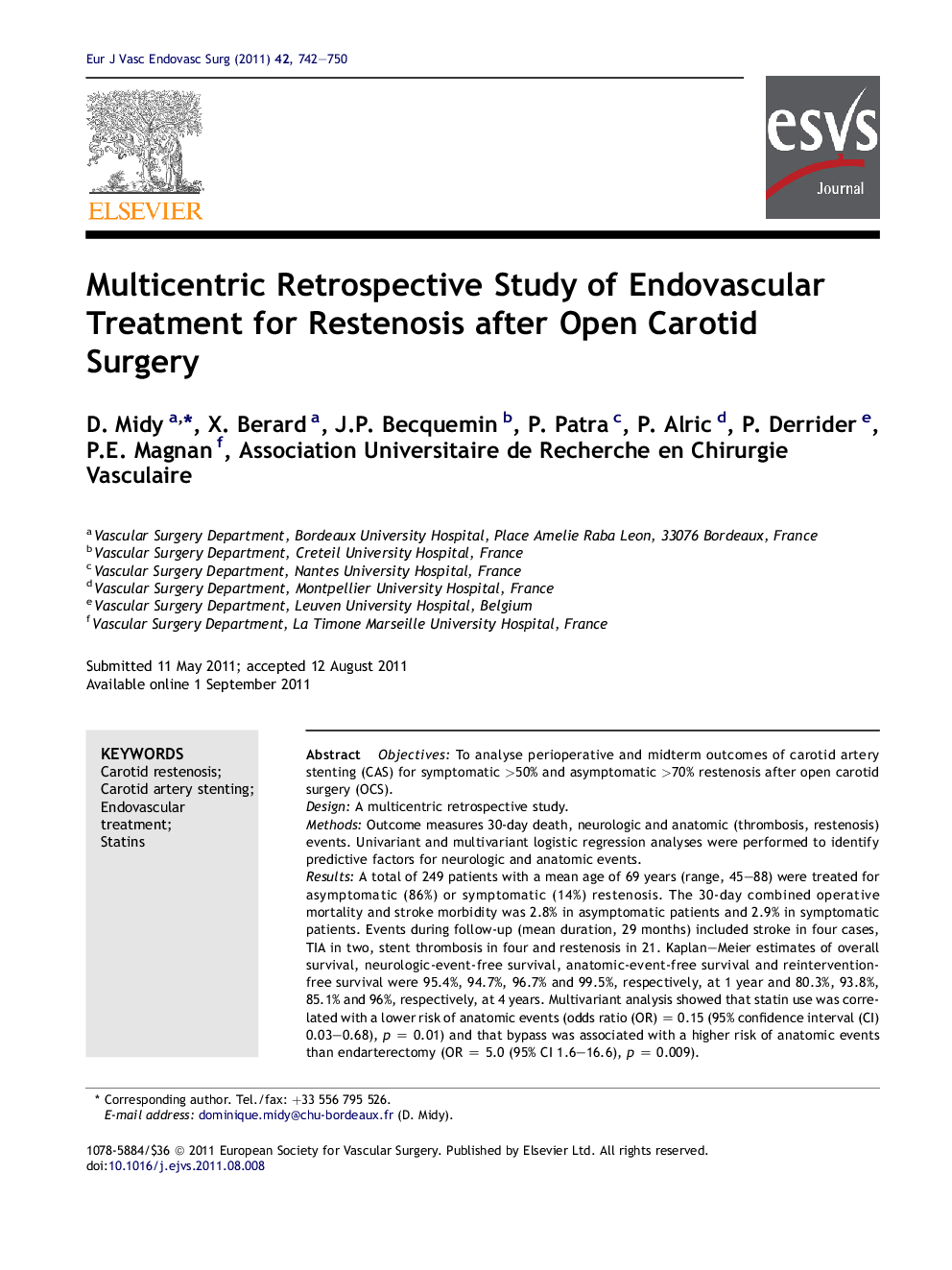| Article ID | Journal | Published Year | Pages | File Type |
|---|---|---|---|---|
| 2913904 | European Journal of Vascular and Endovascular Surgery | 2011 | 9 Pages |
ObjectivesTo analyse perioperative and midterm outcomes of carotid artery stenting (CAS) for symptomatic >50% and asymptomatic >70% restenosis after open carotid surgery (OCS).DesignA multicentric retrospective study.MethodsOutcome measures 30-day death, neurologic and anatomic (thrombosis, restenosis) events. Univariant and multivariant logistic regression analyses were performed to identify predictive factors for neurologic and anatomic events.ResultsA total of 249 patients with a mean age of 69 years (range, 45–88) were treated for asymptomatic (86%) or symptomatic (14%) restenosis. The 30-day combined operative mortality and stroke morbidity was 2.8% in asymptomatic patients and 2.9% in symptomatic patients. Events during follow-up (mean duration, 29 months) included stroke in four cases, TIA in two, stent thrombosis in four and restenosis in 21. Kaplan–Meier estimates of overall survival, neurologic-event-free survival, anatomic-event-free survival and reintervention-free survival were 95.4%, 94.7%, 96.7% and 99.5%, respectively, at 1 year and 80.3%, 93.8%, 85.1% and 96%, respectively, at 4 years. Multivariant analysis showed that statin use was correlated with a lower risk of anatomic events (odds ratio (OR) = 0.15 (95% confidence interval (CI) 0.03–0.68), p = 0.01) and that bypass was associated with a higher risk of anatomic events than endarterectomy (OR = 5.0 (95% CI 1.6–16.6), p = 0.009).ConclusionCAS is a feasible therapeutic alternative to OCS for carotid restenosis with acceptable risks in the perioperative period. Restenosis rate may be higher in patients treated after bypass.
